From clueless plant killer to a passionate container gardener—this is the story of how I turned mistakes into a blooming garden (and why you might start yours too!).
Why I Started Container Gardening?
It’s a question that even I asked myself many times—why did I start container gardening? So let’s answer that. But before anything else, a quick intro: I’m Jayashantha, the blogger you’ll be traveling along with till the end of this post (only if you read it fully, of course).
I’m a gardener from a rural area in southern Tamil Nadu, India. I come from an agricultural family—sounds like gardening should come naturally, right? But here’s the twist: our family left the agricultural business before I was even born. So for me, it’s been a journey with—not-so-green thumbs.
My love for plants began with my late grandpa. I was just a child when we planted a few flowers like roses in pots, mostly to decorate my hair. Then came a long pause. For nearly a decade, we only dabbled here and there with roses, chrysanthemums, curry leaves, guava, and lemon.
Then came the bang—in 2018, I suddenly got obsessed with home decor. That’s when I started buying plants from a nearby nursery. A few survived. But the real research and learning began in 2020.
“If you’re struggling to keep plants alive, this story is for you.”
Because I’ve been there—a clueless gardener who killed countless plants (seriously, you have no idea how many). After years of trial and error from 2018 to 2023, I finally figured out what works and what doesn’t. And what happened after that? Well… read on below!
Life Before Gardening: A Not-So-Green Thumb
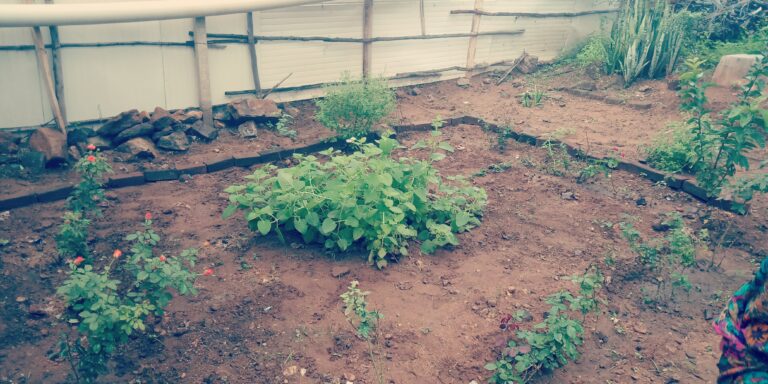
The above image was the exact image of how my garden was before.
I wasn’t fully aware of what I was doing when I used to plant directly in the ground or in a few pots before 2020. The ground garden thrived mostly on native plant varieties and kitchen waste as compost. Even the watering was minimal, and the plants did just fine.
But everything changed when I primarily adopted container gardening—mainly due to space limitations. That’s when the real gardening struggles began. One by one, my plants wilted or died. I spent 2–3 years obsessively reading gardening blogs and articles, almost like a devotional gardener. During that time, I kept buying pots, plants, seeds, and all kinds of gardening essentials.
Eventually, I realized what really worked: choosing plants that suited my local climate and creating a tailored soil mix specifically for container gardening—not using heavy garden soil. I also learned to invest in good-quality pots—the ones that lasted for years without damage became my go-to.
Not all tutorials work for everyone. You need to understand a few essential facts—and especially the mistakes you should never make. It was frustrating to see plants die and spend money again on the same ones. But everything I’ve learned and applied along the way has helped me gain a little bit of a green thumb—and more importantly, cut down 90% of the wasteful spending I used to do on gardening.
👉 Want to know which pots actually make a difference? Read my guide on the 6 best pots for container gardening and discover tried-and-tested tips.
The Turning Point: Discovering Container Gardening
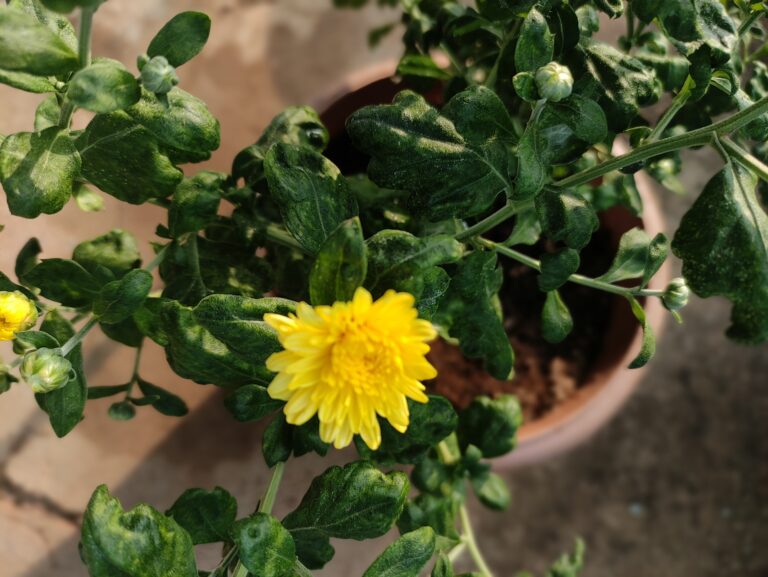
How I discovered container gardening in a small space isn’t exactly a dramatic story. I was already growing a few trees in our ground garden, but the space filled up quickly. Still, I had more plants in mind—so, boom! I bought a few terracotta pots from a nearby nursery along with some foliage plants and casually started placing them on the terrace. Honestly, I didn’t even know it was called “container gardening” back then.
But that was the moment everything changed. The plants didn’t do well at all. I started Googling for answers, reading articles, and trying random hacks. Some plants survived, others didn’t. That’s when the reader in me got obsessed with gardening blogs. I started organizing notes from everything I read.
I tried so many products recommended by YouTube influencers and bloggers—still, some plants were just stubborn. The turning point came when I began taking serious notes: understanding plant types, climate suitability, soil structure, watering habits, Sunlight, space, drainage and fertilizers. That’s when the game changed.
I didn’t just research—I experimented. I applied everything to my own garden pots, learned through trial and error, faced failures, and found small victories. Over time, I figured out what actually works—and what totally sucks.
Most importantly, I found the mistakes that can literally kill a plant. So yes, it’s okay to be clueless in the beginning. But if you have the enthusiasm to continue, your hobby might just turn into a full-blown passion—or even a career, like it did for me.
First Successes: Small Wins with Pots and Plants
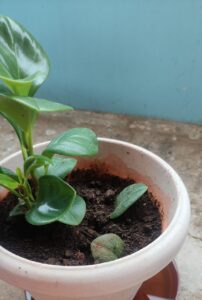
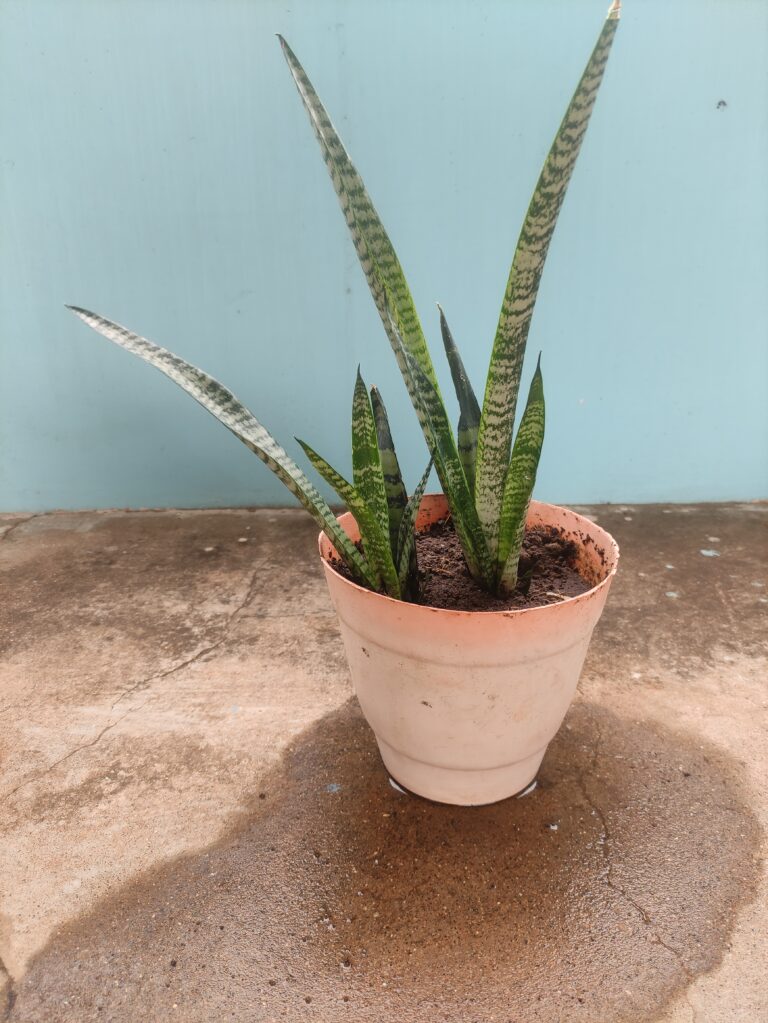
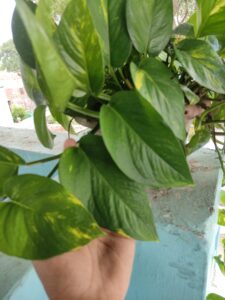
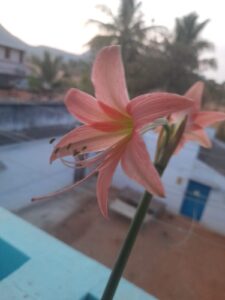
The one search term that truly saved my green thumb was: “easy plants to grow in pots for beginners.” That simple search brought up countless blog posts—and among them, a few familiar plant families that are known for being low-maintenance and hard to kill. I bought them, and to my relief, they worked. They weren’t rare or exotic plants, but they helped keep the gardener in me alive.
The first three were: pothos, snake plant, and peperomia. These are all known for being beginner-friendly and easy to care for. But let me be honest—I still managed to kill some varieties of peperomia due to overwatering and using heavy, compact soil. That taught me something valuable: even hardy plants can die if you make simple mistakes with soil or watering.
These first pots gave me a crucial insight into plant types—especially succulents, drought-tolerant varieties, and foliage plants that thrive with minimal care. I slowly added more plants in this category, and with a bit of effort—balanced watering, proper soil, and drainage—they actually survived!
There are some common ground rules that gardening experts always emphasize. Sadly, many beginners (my past self included) either ignore or misunderstand them—especially when it comes to container gardening. I’ll talk about these golden rules in a future blog, because they can truly prevent your plants from dying.
Why Container Gardening Works for Me
The real reason container gardening worked so well for me comes down to the types of plants I chose—flowers, foliage plants, herbs, and succulents. Not root vegetables or fruit trees, which are heavy feeders and need deeper soil and more space. Even though I grow a few of those now, I’m very picky. I always consider a plant’s growing habit, mature height, and root type before planting.
These little fact-checks help me decide whether a plant is truly suitable for container gardening. They act like a quick “reality check” before I buy any new plant. And once you start doing that, it saves you from a lot of disappointment and wasted money.
Speaking of money—container gardening is way more affordable than traditional ground gardening. I’ve spent just a quarter of what I would have spent growing the same variety of plants in a full landscape garden. No need for massive amounts of fertilizer, no constant weeding, and no worrying about reclaiming space if a plant has to be removed.
In container gardening, my main investment is an annual soil amendment mix: cocopeat, compost, manure, and perlite. To feed my plants, I use a simple combo of organic slow-release fertilizers, and that’s more than enough to keep most of them thriving.
And the best part? I get extreme flexibility. I can move pots around as needed—whether it’s to catch sunlight, protect plants from rain, or simply change the look of my terrace garden.
My Favorite Container Gardening Tools and Setups
One of the best things about container gardening is that you don’t need expensive or heavy tools to get started. The must-have tools for beginners are surprisingly simple: a watering can, a basic hand tool set, and a gardening mat to manage soil spills. I’ve been using the same basic tools for over 7 years—and they still do the job perfectly!
Besides a watering can, here’s what you’ll actually need:
Trowel– for planting and transplanting your plants.
Hand rake and fork – great for loosening soil and light weeding.
Gardening gloves – to protect your hands and keep your nails clean (a personal must for me!).
Pruner – to trim dead or overgrown parts and keep your plants looking neat and healthy.
Gardening mat – it might sound a little extra, but trust me, it saves you from constant soil cleanup.
When it comes to setting up your gardening space, my honest tip is this: keep a sturdy table with some storage space in a shaded area. It helps you stay organized, keeps all your tools within reach, and lets you work comfortably for hours without feeling exhausted.

Encouragement for Newbies
If you’re wondering how to start container gardening when you’re a beginner, you’re not alone. I had the same question once too. The good news? You don’t need a huge garden, expensive setup, or fancy tools. With just a few basic essentials, you can get started under ₹2000—and that’s enough to set up and care for 5–10 pots!
Here’s a simple breakdown of what you’ll need:
Basic Container Gardening Essentials
Cocopeat block – helps retain moisture and improves soil texture.
Compost and manure – provides natural nutrients for healthy plant growth.
Perlite– keeps the soil airy and improves drainage.
Fertilizer combo (organic slow release) – long-term plant nourishment.
8-inch pots (12 pcs) – affordable and perfect for most small plants.
Watering can – for controlled, gentle watering.
Gardening tool combo – includes trowel, fork, rake, pruner, gloves, etc.
Gardening mat – keeps your workspace clean and saves you from soil mess.
You can get most of these items from local garden shops or online, and they’ll support the care of 20+ plants once your collection grows.
Top 5 Easy Plants to Start With
These plants are hardy, beginner-friendly, and beautiful:
If you’re scared of killing your plants (like I was in the beginning), don’t worry! I didn’t have access to simple, honest blogs like this when I started—and I still survived the era of being a not-so-great gardener.
Now, you’ve got guidance, tools, and support. Mistakes will happen, but that’s how you learn. And believe me—the moment you see your plants thriving, the smile they bring is worth every effort.
Conclusion
Start your container garden today—with the help of our blogs and gardening tips. Don’t forget to follow us on social media to stay updated whenever a new post goes live. Let’s keep your green thumb growing with shared knowledge and real experiences.
If you’re still hesitating out of fear of killing a plant—just scroll back to the top and read again. I’ve killed more plants than I can count, but I’ve also grown nearly 100 plants that are now thriving (and yes, some still fall). That’s the real journey—growing plants helps you grow as a person. It fuels your curiosity, your patience, and your joy.
I’d love to hear from you—share your thoughts, experiences, or questions in the comments. Let’s build a supportive gardening community together. Keep growing—in your garden and in life.
Have questions about starting your container garden? 🌱
I’d love to hear from you! Visit the Contact Page to ask your questions, share your gardening experiences, or request personalized tips.

Pingback: No-Fluff Guide to Container Gardening – Real Tips from 7 Years of Growing Experience
Pingback: Choosing the Right Containers: Real Tips from 7 Years of Container Gardening
Pingback: Top 3 Essentials for Container Gardening Success: Sunlight, Space & Drainage Explained
Pingback: What I Learned About Cocopeat, Compost, & Perlite – A 7-Year Container Gardener’s Honest Take - Not_So_Green_Thumb
Pingback: My Go-To Potting Mix Recipe (and What Totally Failed!)
Pingback: top-8-beginner-gardening-mistakes-to-avoid-for-healthy-plant
Pingback: Liquid Fertilizer That Works: 7 Years of Real Plant Results
Pingback: Budget Pest Control Tips from 7 Yrs of Garden Know-How
Pingback: Start Your Herb Garden Today in Just 5 Easy Steps - Not_So_Green_Thumb
Pingback: 6 Simple Watering Rules for Stress-Free Container Care
Pingback: Overgrown Pots? 7 Easy Pruning Lessons for Healthy Plants
Pingback: 9 Easy Ways to Keep Container Plants Healthy in Humid Rain
Pingback: Summer Heat Survival: 7 Years of Container Gardening Lessons
Pingback: My Biggest Tool Regrets After 7 Years of Container Gardening
Pingback: 5 Eco Diwali Tricks to Light Up Pots, Not Burn Leaves